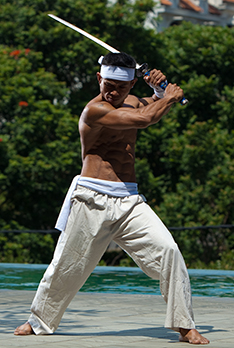The Physics of Power:
How Angular Momentum Shapes the Forehand
By Chris Lewit

When you swing a knife or a sword, you may not be thinking about physics—but physics is definitely at play. The difference in how fast they move, how much force they deliver, and how they feel in your hand all comes down to principles like angular momentum and angular velocity. Interestingly, these same concepts help explain the evolution of the modern tennis forehand, particularly in how players wield lightweight, stiff racquets to produce explosive power. Let's dive into the science of rotational motion and then explore how it connects directly to your game on the court.
Angular Velocity, Radius, and Tip Speed
When you swing any object around a fixed point—your shoulder, elbow, or wrist, for example—you generate angular velocity. This is how fast the object is rotating. The linear speed at the tip (how fast the end moves through space) depends on how far that tip is from the axis of rotation.
Linear Velocity at Tip = Angular Velocity (ω) × Radius (r)
This means that a longer sword or racquet (greater r) will have a faster-moving tip at the same angular velocity. That's why longer weapons or tools can generate more cutting or striking force—if you can accelerate them.




